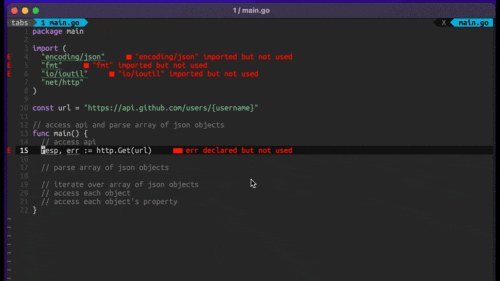
Four Key Reasons to Learn Markdown
Back-End Leveling UpWriting documentation is fun—really, really fun. I know some engineers may disagree with me, but as a technical writer, creating quality documentation that will...

GraphQL is a technology that’s rapidly rising in popularity. Here at Big Nerd Ranch, we always like to use the best available tool to solve our customer’s problems. We recently had a client project which looked like a great fit for this new technology. We spent three months working with GraphQL as our main API design for an iOS app.
In this series of blog posts, we’ll look at what made GraphQL an appealing technology, the benefits and shortfalls we discovered while using it, and what we recommend others do when considering using this technology in their own projects. Let’s get started!
There are a handful of useful features that GraphQL promises. They are:
Once the GraphQL schema is defined, it is trivial to deploy a mock server that the frontend devs can build against while the real backend is implemented.
The get-what-you-ask-for approach of GraphQL saves bandwidth. The client can ask for multiple screens worth of data in one request, which would be multiple requests in a traditional REST API.
GraphQL is designed to minimize the cost of fetching data from an app. You can batch multiple requests for independent objects together to minimize the number of network connections. You can specify exactly which properties you need from those models to minimize the payload. And this can all be done dynamically on the client side, without a deployed change to the API.
Apollo has a large suite of libraries that seem to meet all GraphQL needs. Apollo Server claims it is, “The best way to quickly build a production-ready, self-documenting API for GraphQL clients, using data from any source.”
One of the promises of the Apollo GraphQL iOS SDK is that it automatically builds type-safe models that match your GraphQL queries. We don’t need to build codable models separate from our queries – if we want a new model or a new property we just need to ask for it. The build system handles the rest.
Let’s play devil’s advocate for a minute. What are some good reasons to not use GraphQL on a project?
REST has been the standard means of building APIs for years now. It’s well understood by both our backend team and our mobile team. If you have a solid understanding of what the primary objects were in your data model, a REST service is relatively easy to create.
The biggest risk anytime you adopt a new technology is that you have gaps in your understanding that don’t surface until something fails. Documentation isn’t a perfect substitute for experience.
On this particular client project, a few key points tipped us towards using GraphQL:
How did it go? Check out Part 2 to see.

Writing documentation is fun—really, really fun. I know some engineers may disagree with me, but as a technical writer, creating quality documentation that will...

Humanity has come a long way in its technological journey. We have reached the cusp of an age in which the concepts we have...

Go 1.18 has finally landed, and with it comes its own flavor of generics. In a previous post, we went over the accepted proposal and dove...